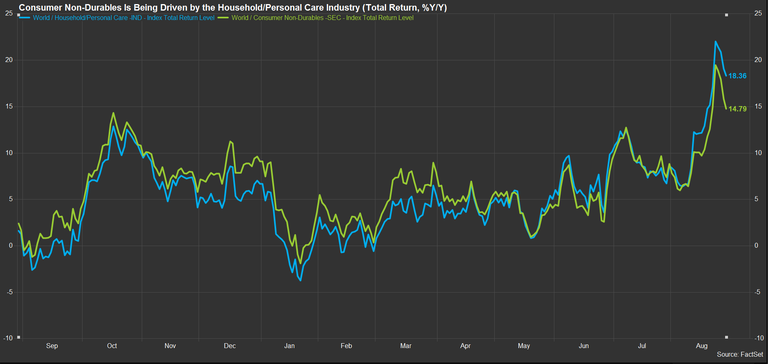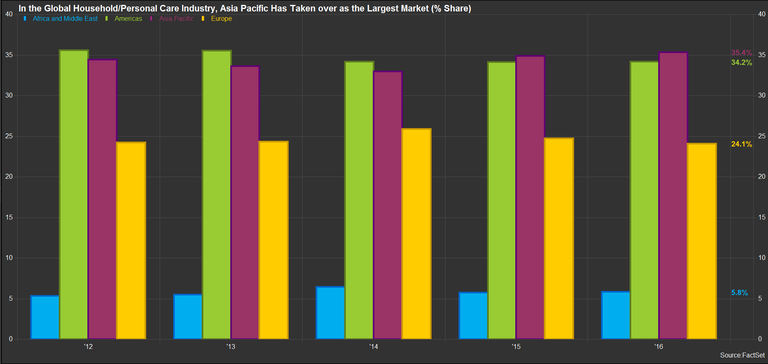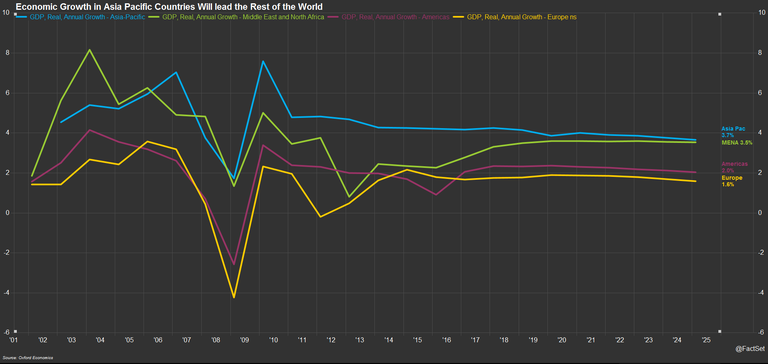According to FactSet Market Indices, the global stock market is up 4.9% year-to-date and 6.7% from a year ago. Digging into the overall numbers reveals broadly divergent performance across the various sectors; technology services companies are up 18.5% year-over-year while industrial services are down 1.1%. The second largest sector in the global index is consumer non-durables (8.5% weight) and this sector has been among the fastest growing in the last year, up 14.8%. The consumer non-durables sector is largely made up of consumer staples, a category of goods that are generally considered an investment hedge in uncertain times. With global economic growth still shaky in many parts of the world it’s not surprising to see strength here, but there are other trends at work as well.

FactSet clients: launch this chart
The various industries that make up the consumer non-durables sector have mostly seen double-digit growth over the last year, with the exception of apparel/footwear (0.7%) and consumer sundries (-24.2%). The largest industry in this sector is household/personal care which has seen year-over-growth of 18.4%.

FactSet clients: launch this chart
The key to the strength in this industry may be revealed by looking at the global distribution of sales. In 2015 the Asia Pacific region represented 34.9% of total revenue and so far in 2016 that number has risen to 35.4%. This compares to 34.2% from the Americas and 24.1% from Europe so far this year, despite the fact that Asian-domiciled companies make up less than a quarter of the index by weight. While most of the Asian-based companies are small in size and sell primarily within Asia, for US and European companies in particular, Asia represents a growth opportunity.
Related: US Elections, China Concern at Camp Kotok
The Yardstick of Civilization...and Economic Growth
According to Oxford Economics, economic growth in the Asia Pacific region will continue to outpace the rest of the world over the next decade. Annual real GDP growth is projected to average 4.0% over the next 10 years, just ahead of the Middle East and North Africa (3.3%) and well ahead of the Americas (2.1%) and Europe (1.8%). For China and other emerging Asian countries, faster economic growth compared to the rest of the developed world means an expanding middle class, and a growing market for personal care products. For two of the top three companies in the household/personal care index, Procter & Gamble and Unilever, FactSet estimates that China is the second largest market for goods after the United States; for L’Oreal, the second largest company, China is third after the US and France.

FactSet clients: launch this chart
Other regions to watch are the Middle East and Latin America, especially Brazil. The Middle East represents a small but growing share of the beauty products industry, and with continued economic growth the region will attract more global companies. Avon Products is one company that has already invested big in Latin America. The company’s top three markets are Brazil, Mexico, and Argentina, and last year 52.9% of sales came from Latin America. Unfortunately this has not proven to be a successful region for the company to have linked its fortunes; revenues have fallen for the last four years. Avon is betting that the Brazilian economy will turn around while other companies are making their bets on Asia.
